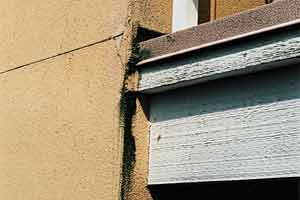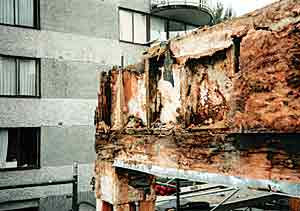Enhancing Roof Deck Performance with PVC Waterproof Membranes
Design Considerations-the Six Ds
For illustrative purposes, consider a project to waterproof, such as a walkable roof deck. Key design considerations can be thought of as the six Ds-deflection, drainage, drying, durability, detailing, and deconstruction. Each plays an important role in the performance of both the deck and the waterproofing system.
Deflection refers to a deck's ability to control surface water and is affected by several factors, including slope, drip edges, and diverters. For the best product performance and customer enjoyment of the deck surface, the structure should be sloped to eliminate ponding water, while accounting for building shrinkage or settlement. If the deck is designed with the correct slope, water will flow away from the building into a gutter system or over a drip edge away from the exterior wall system. Slope is vitally important. On new construction, wood frame buildings can shrink as much as 1/2 inch per floor, which can result in the balcony sloping in the wrong direction-a situation that can have adverse consequences for controlling surface water. Furthermore, building settling can make things worse if enough slope hasn't been built in. But given the proper slope-approximately two percent or 1/4 inch in 12 inches-a simple drip edge detail is usually the most expedient way of removing surface water from the deck surface; false fascia detailing can be used to hide the gutter, fascia, railing mounts, and deck slope. Severe structural damage can occur if the waterproofing detail is not correctly done. "If most of the water is diverted away from critical areas, it's less likely that problems will occur," says Ogilvie. (Figure 4) To address this situation, simple pre-manufactured diverters can be installed and waterproofed to steer water away from adjoining walls and other critical junctions.
|
Drainage refers to the ability of the building assembly to redirect any liquid water that enters the system and allow it to drain to the outside. Drainage is dependent on two factors: flashing and proper sequencing of moisture barriers and detailing of wall openings. Flashings are metal components that are placed at strategic spots to either direct water to an appropriate location or to keep it out of a structure. A wall flashing, for example, is attached to the outside wall several inches above the deck surface, and overlapped by tar paper which, in turn, sheds the water onto the PVC roof membrane. In this case, the PVC membrane would tuck up under the flashing so that no water-from snow, splashback, wind-driven rain or from hosing off the deck-can get into the wall system.
Special attention to flashing is important, as incorrect detailing of flashing elements will invariably lead to leaks and water damage. For example, curbs or knee walls higher than three inches or higher than a wall opening will result in a "trapped" deck system that requires special drainage. Should a trapped deck occur, the top plate of the curb or knee wall must slope back toward the deck surface. In addition, the PVC membrane should extend to the line of the outside drip edge, which, in turn, should extend well out from the building wall surface.
Consideration should also be paid to sequencing of building components; failure to do so can lead to severe moisture intrusion. Proper sequencing of moisture barriers is critical, and installing the PVC membrane after the wall assembly has been completed will almost always lead to failure. In the first step, the vinyl is installed on the floor and extended up the wall a minimum of six inches (the actual height is dictated by the local building code). Vertical surfaces are then covered by a tar paper which overlaps the vinyl by at least two inches; some builders use two layers of tar paper for added waterproofing protection. Horizontal surfaces such as the top of stub walls or solid railings should be covered with a peel-and-stick membrane. Special attention should always be paid to the "saddle," where horizontal and vertical surfaces meet.











